Introduction
The HME industry is complex and fast-paced, with tight margins, ever-changing payer requirements, and increasing operational demands. Success hinges on one key factor: financial literacy. Without clear metrics to guide your decisions, your business risks flying blind.
This guide is designed to empower HME and DME businesses with actionable insights into their financial health. By mastering essential metrics and optimizing your systems, you can transform your business from merely surviving to truly thriving.
1. Revenue: Tracking Growth and Trends
Revenue is the lifeblood of your business. It represents the total booked sales for a given period, but tracking it accurately requires diligence.
Why Revenue Matters
- Growth Monitoring: Trending your revenue helps you identify patterns and forecast future performance.
- Operational Planning: Knowing your revenue guides staffing, inventory, and cash flow decisions.
How to Track Revenue
- Keep fee schedules up to date to avoid underbilling.
- Use your EMR system to generate detailed revenue reports.
- Analyze revenue trends monthly to identify growth opportunities.
Pitfalls to Avoid
- Outdated fee schedules leading to inaccurate billing.
- Relying on gross revenue without factoring in payer-specific adjustments.
2. Accounts Receivable (AR): Closing the Gap
AR reflects the time it takes to turn booked sales into cash. Delayed payments can cripple cash flow, making AR management a top priority.
Understanding AR Aging Buckets
- AR is categorized into five buckets: 0-30, 31-60, 61-90, 91-120, and 121+ days.
- Claims in the 91-to-120-day bucket require immediate attention to avoid timely filing denials.
Key AR Metrics
- Collection Rate: The percentage of AR collected monthly. Aim for a high rate to maintain healthy cash flow.
- Days Sales Outstanding (DSO): The average number of days it takes to collect payments. Lower DSO means faster collections.
Best Practices
- Aggressively work claims nearing 90 days to prevent denials.
- Regularly review AR aging reports and take corrective action.
3. Cash Flow: The Lifeblood of Your Business
Cash flow keeps your business operational. Without it, even the best strategies can fail.
Tracking Cash Flow
- Monitor monthly cash activity, including bank deposits and payer payments.
- Categorize cash inflows by HCPC codes to identify trends.
Improving Cash Flow
- Optimize billing and collections processes to reduce delays.
- Regularly reconcile bank statements to ensure accuracy.
- Follow the “velocity of money” principle: invoice as soon as possible to reduce working capital needs and lower costs.
4. Denials Management: Fixing Revenue Roadblocks
Denials directly impact your revenue and can signal operational inefficiencies.
Trending Denials
- Track denials by payer and HCPC codes to identify recurring issues.
- Analyze denial trends monthly and address root causes upstream.
Proactive Denial Prevention
- Communicate denial reports promptly to prevent repeat issues.
- Ensure staff are trained on accurate documentation and billing practices.
- Automate processes to reduce errors and streamline resolution.
5. Profit Margin: Measuring What Matters
Profit margins reveal what’s truly driving your bottom line.
Key Considerations
- Payer allowables vary, and annual fee schedule changes can affect profitability.
- Vendor price adjustments can also impact margins, requiring constant monitoring.
Optimizing Margins
- Use your EMR system to track costs and calculate profitability.
- Identify loss-making services or products and adjust strategies accordingly.
- Knowing what drives profitability allows you to focus on what works and eliminate what doesn’t.
6. Common System Setup Issues and Solutions
System setup issues often hinder the ability to track metrics effectively.
Common Deficiencies
- Erroneous inventory multipliers.
- Outdated fee schedules.
- Incorrect payer mapping.
- Poorly implemented automations.
Solutions
- Conduct a full audit of your EMR system.
- Implement best practices for data entry and automation.
- Train staff to ensure consistent use of systems.
7. Tools and Templates
SOS has developed practical tools to simplify financial management:
Metric Tracking Templates
- Revenue tracking spreadsheets.
- AR aging bucket templates.
- Cash flow monitoring tools.
Denial Management Checklists
- Step-by-step guides to resolving common denial issues.
- Best practices for preventing future denials.
System Setup Guides
- Detailed instructions for configuring EMR systems to capture critical metrics.
8. The Case for Outsourcing RCM Services
For many HME businesses, the resources needed to manage metrics internally can be overwhelming. That’s where SOS comes in.
Benefits of Outsourcing
- Immediate access to experts who understand HME workflows.
- Reduced administrative burden on in-house teams.
- Improved cash flow and profitability through optimized processes.
Why SOS?
- Proven track record of helping HME businesses succeed.
- Transparent pricing with no hidden fees.
- A dedicated partner committed to your growth.
Conclusion
Mastering financial metrics is essential for the long-term success of your HME business. By focusing on revenue, AR, cash flow, denials, and profit margins—and ensuring your systems are set up correctly—you’ll gain the clarity needed to make informed decisions and drive growth.
Ready to take control of your metrics? Let SOS help you achieve sustainable success with our comprehensive RCM services. Contact us today to get started.




